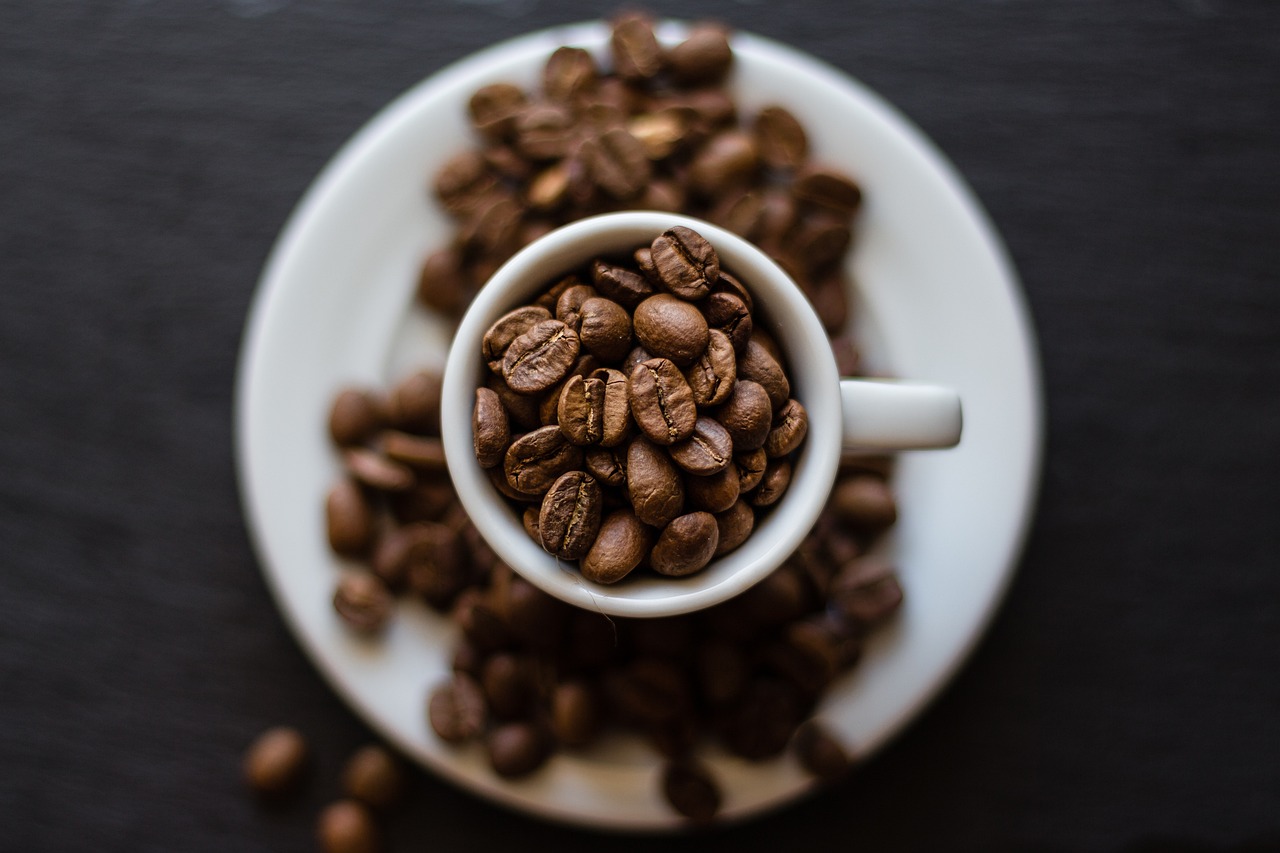Do you know which country drinks the most coffee? What are the health benefits of drinking a cup of coffee every day? Here we reveal some amazing facts about one of the world’s oldest and most popular hot drinks, including how much you should drink every day and how you can roast your own beans at home.
Coffee is a fruit
When you think of coffee, you usually immediately think of coffee powder or coffee beans rather than a fruit. However, coffee is actually made from the small red berries of the coffee plant, known as coffee cherries. The seeds inside these cherries are raw coffee beans. They are roasted to develop their aroma and then ground into powder.
Brazil is the largest producer in the world
Have you ever wondered where your coffee actually comes from? Most likely from Brazil. With a market share of more than 30 percent, the South American country is the largest coffee producer in the world and harvests more than 55 million bags of coffee every year (one bag contains 60 kilograms). For comparison: one kilogram of beans makes around 120 double espressos.
Coffee thrives best at high altitudes
The higher up coffee is grown, the better. A cool, humid climate allows the cherries to ripen gradually and develop complex aromas. Ethiopian coffee plants are grown at 1,500 meters above sea level, and floral, fruity, and spicy aromas develop. At an altitude of 1,200 meters, as with Brazilian coffee, the beans develop nutty and chocolaty notes, whereas at an altitude of 900 meters, they tend to be earthy and less flavorful.
Cultivation takes time
It’s far from the plant to the finished cup of coffee. Coffee producers wait two and a half years for the bushes to bear cherries. The plants must also be carefully tended and spend the first six months in the shade. The last, but most laborious step, is the harvest – the cherries are often picked by hand, as many of the coffee bushes grow on steep slopes.
There are two main varieties: Arabica and Robusta
There are thousands of coffee plant species, but the two varieties that are best known and commercially processed are Arabica and Robusta. Arabica is sweeter, has a higher acidity,, and has complex flavors. Small Robusta has a higher caffeine content and an intense, full-bodied flavor.
Coffee powder often consists of a blend of the two varieties, and the beans are brown because they are roasted.
Coffee looks very different in its original state than when roasted—when the beans are picked, they are green. During roasting, the starch is converted into sugar, which then caramelizes and gives the beans a brown color. This process (the Maillard reaction, responsible for the browning and development of aromas) is similar to baking bread. In addition, a fragrant oil develops during the roasting of coffee acid.
Coffee can be roasted at home
Ideally, the beans should be brewed a week after roasting. However, coffee beans from the supermarket can be months old, affecting the taste. Gourmets therefore buy raw beans to roast them themselves. All you need is a cast-iron pan or a popcorn maker.
The coffee plant is also good for tea
Yes, there’s no mistake about it. Cascara, or coffee cherry tea, is an infusion made from the dried skin of coffee cherries. The caffeine content is low, and the taste is more comparable to a fruit tea than a herbal or leaf tea.
Coffee has a long history
It is unclear exactly when coffee was discovered. According to legend, the Ethiopian goatherd Kaldi discovered in 850 AD that his animals became much livelier after eating the ripe berries of an Arabica bush. He then tried the fruit himself and noticed the effect of the caffeine on his own body.
The origin lies in Ethiopia
Regardless of whether the story of the goatherd Kaldi is true or fictional, Ethiopia is generally considered to be the country of origin of coffee. Coffee plants grow without being cultivated in the Kaffa region, about 460 kilometers southwest of the capital Addis Ababa. There are almost 5,000 wild varieties in the mountainous forests.
Coffee was an integral part of religious ceremonies
The first place outside Africa where coffee spread was Yemen, where it was drunk by Sufi monks during religious ceremonies in the Middle Ages. From roasting the beans to consuming the drink that helped them stay awake for a long time, coffee was an integral part of worship.
Coffee was known as the wine of Arabia
With the Turks’ conquest of the Arabian Peninsula in the 16th century, coffee consumption spread throughout the Ottoman Empire. As Muslims did not drink alcohol, coffee was a popular substitute. It was called kahve, “wine from Arabia”, and the first coffee houses were popular meeting places
Coffee differed from other beverages in that it was drunk in public coffee houses in the cities of the Middle East and Africa. People came here to chat, socialize, and catch up on the day’s latest news. The first coffee house in the German-speaking world opened on Bremen’s market square in 1673. Another followed in Hamburg in 1677 and in Regensburg in 1686, and drinking coffee was once punishable by death
In contrast to other countries, the Ottoman Sultan Murad IV had an aversion to coffeehouses, believing the people there were plotting against him. In 1633, he made the consumption of coffee in Istanbul punishable by death. The Sultan was neither the first nor the last ruler to find coffee a thorn in his side. Between the 16th and 18th centuries, many European and Middle Eastern rulers tried to ban the drink.
Coffee became popular in the USA after the Boston Tea Party
Most of the inhabitants of the British colonies in North America were tea drinkers, as tea was preferred in Great Britain. But that changed in 1773 when the British government raised tea taxes, and hundreds of imported tea chests were thrown into the sea in protest. This action, known as the Boston Tea Party, was seen as a symbolic act of resistance to British rule. In response, it was considered patriotic among American colonists to drink coffee instead of tea.
Cappuccino got its name from the Capuchin monks
The Capuchin monks were not big coffee drinkers, but the brown color of the latte reminded 19th-century Viennese coffee house owners of their robes. It was in the Austrian capital that the Capuchin, a coffee with milk, was first prepared. The modern cappuccino with hot milk foam on top came later and was an Italian creation. A Kapuziner is generally considered a small mocha with a little whipped cream.
- hector pascua/picture: Image by Christos Giakkas from Pixabay
This post has already been read 7500 times!



